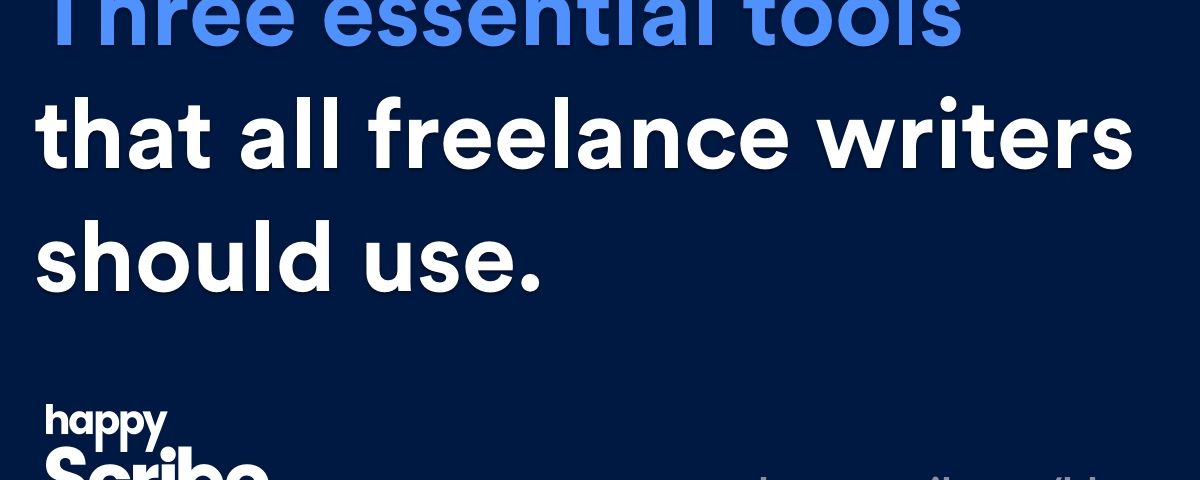Three essential tools that all freelance writers should use

If you’re one of the many freelance writers that makes up the ‘gig economy’, you’re in good company. Latest figures suggest that there’s 2 million freelancers in the UK, most of whom work in professional and technical occupations – namely writing.
As self-employment has grown, so has the advancement of online tools, resources and apps to help make working from home, and on-the-go, that bit easier.
Here’s three essential tools that every freelancer will benefit from:
1. Online Transcribing Services Whether you’re a journalist, freelance writer, blogger, PR consultant or corporate copywriter, interviews are likely to be a large part of your work. No doubt, transcribing interviews is the bane of your life, taking hours of rewinding, rewriting and distracting from the task in hand.
This is why an online transcribing service is top of our list for writers. While there are apps and transcribers you can hire, these can be timely and unreliable.
A popular online transcribing used by journalists is Happy Scribe. The online transcription software makes it easy to use. Audio files are uploaded online and transcribed using state-of-the-art technology within minutes. It’s also very affordable, costing 9p per word to transcribe.
When you calculate your hourly rate versus the affordability of using the service, you’ll see how it pays for itself.
2. Plagiarism Checker A valuable free online software programme that is commonly used by writers is copyscape. This check copy for plagiarism against web pages online. There’s also a premium service with other added benefits.
This is useful for two reasons. Firstly, for fact-checking your own content before submission. Editors are hot on this topic and do not take kindly to work that may have been copied, whether accidently or otherwise. The other reason is to fact check any copy that others may have sent to you – junior reporters, researchers or otherwise.
3. Google Keywords Increasingly, SEO keywords are becoming an integral part of copywriting. This form of ‘littering copy’ with searchable words started out as a marketing resource, but now extends to almost all online copy in some form.
As a freelance writer, you may receive requests from clients and editors to incorporate keywords in to your copy. This is where Google Adwords comes in handy. Free to use, the keyword planner will equip you with all the relevant terms you need to make your copy searchable.
If you think this just applies to marketers then think again. It’s an essential tool for anyone that contributes content online. Staying on top of keyword trends means that your content remains relevant.
If you’re a freelance writer, why not check out Happy Scribe to see how it can help improve your productivity and free you up! For a limited time, you can take advantage of a free trial!

André Bastié
Hello! I'm André Bastié, the passionate CEO of HappyScribe, a leading transcription service provider that has revolutionized the way people access and interact with audio and video content. My commitment to developing innovative technology and user-friendly solutions has made HappyScribe a trusted partner for transcription and subtitling needs.
With extensive experience in the field, I've dedicated myself to creating a platform that is accurate, efficient, and accessible for a wide range of users. By incorporating artificial intelligence and natural language processing, I've developed a platform that delivers exceptional transcription accuracy while remaining cost-effective and time-efficient.